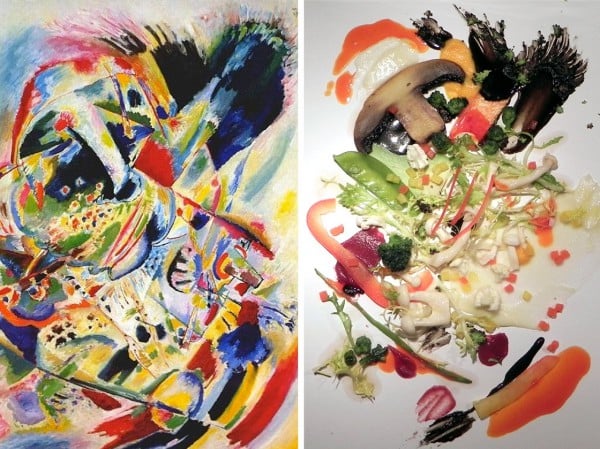Art World
Study Shows Food Tastes Better When It Looks Like Art


Cait Munro

You may have heard that life often imitates art, but what about food? According to researchers at the University of Oxford, it is exceedingly more palatable when it does.
NPR reports that the researchers set up a study with 60 people divided into three groups. Each group was given a salad with the same ingredients presented differently. The first group’s salad was a typical arrangement—a ball in the middle of the plate. The second group found their meal lined up in careful rows. But, the lucky participants in the third group were treated to a salad that was arranged to resemble Wassily Kandinsky‘s expressionist masterpiece Painting No. 201. Needless to say, the artfully composed salad outperformed its plainer siblings by an 18 percent margin. The participants also intimated that they would be willing to pay up to twice as much for it as they would for a regularly-presented salad.
If you’re wondering why Kandinsky’s work was selected over, say, a Pollock (too much sauce involved) or a Rothko (works better with cakes), Charles Michel, the lead author of the study, says he chose the piece because he liked “the specific association of colors and movement,” and when he looked at it, he could easily envision a salad that prominently featured a mushroom shape in the top left corner.
The study posits that the diners found the high-art salad more appealing because it “implicitly suggested a connotation of higher value (or effort) through the visual display, value that might have helped to deliver a more pleasurable eating experience.”